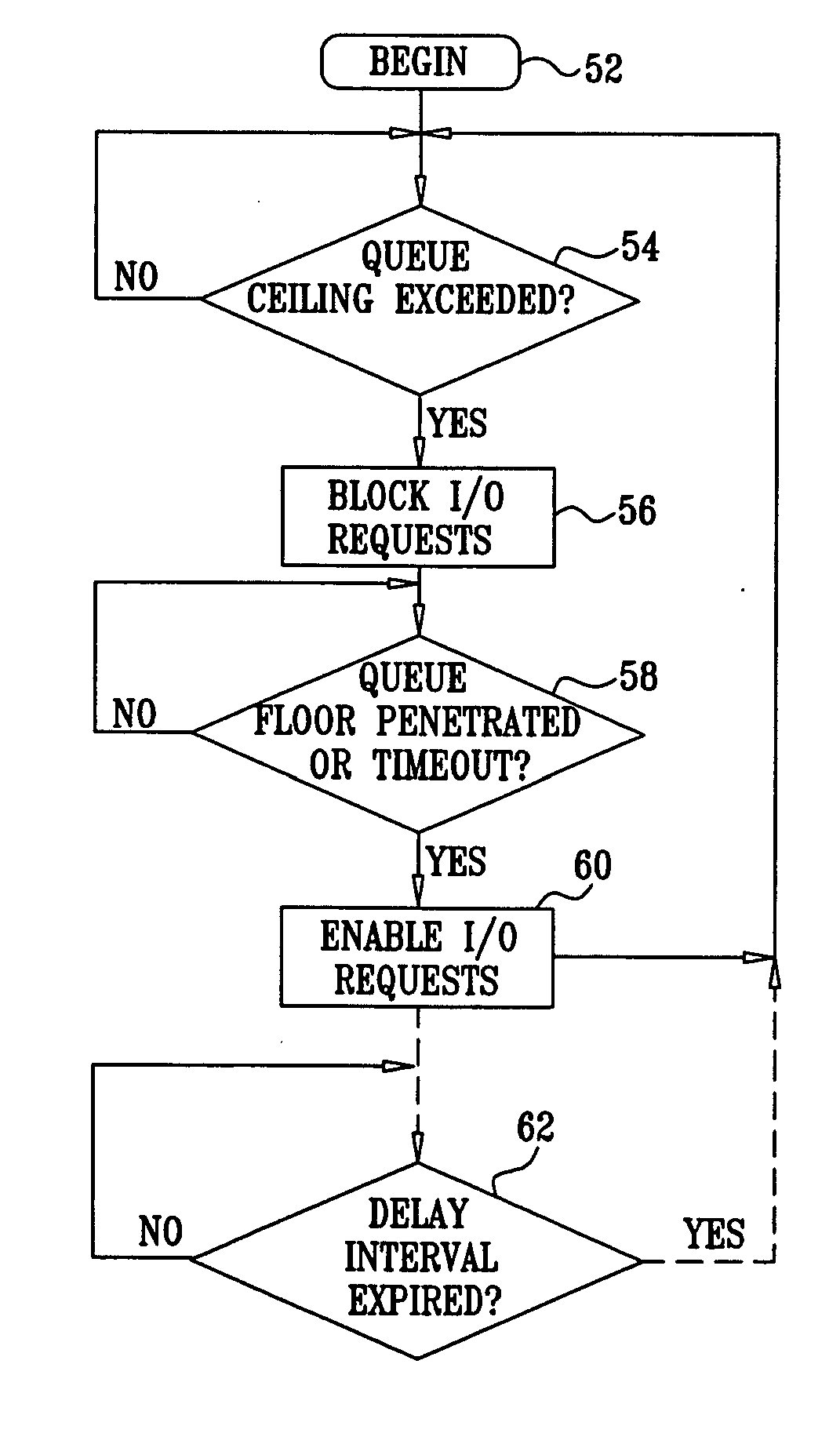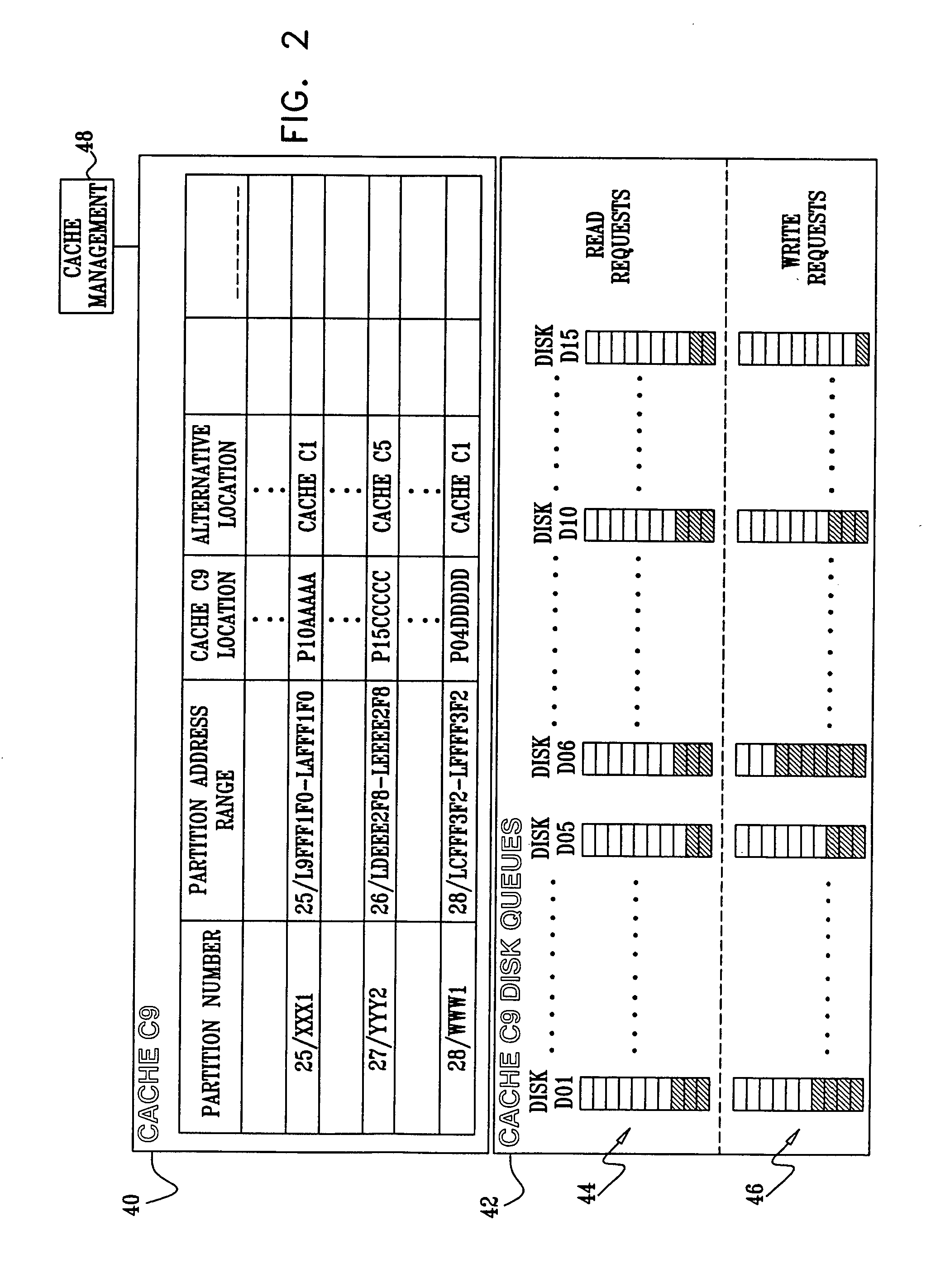Restricting access to improve data availability
a technology of restricting access and improving data availability, applied in the field of data storage, can solve the problems of affecting the functioning of the system, affecting the availability of data, so as to reduce the latency of data access and the aggregate system data access. the effect of significant reduction
- Summary
- Abstract
- Description
- Claims
- Application Information
AI Technical Summary
Benefits of technology
Problems solved by technology
Method used
Image
Examples
embodiment 1
Alternate Embodiment 1
[0051] In one embodiment of the invention, I / O requests are not completely blocked when an unbalanced or overload condition is detected. Rather the rate at which I / O requests are accepted is limited. The rate limitation can be constant. Alternatively, the rate limitation may be adaptive, depending on the degree of unbalance or overload. In any case, the rate limitation persists until the unbalanced or overload condition is alleviated.
[0052] Rate limitation may be implemented by rapid alternation of short blocking intervals that are separated by intervals in which I / O requests are accepted. The intervals can be configured adaptively to the degree of imbalance or overload, or can be constant, in accordance with a predetermined policy. For example, a network interface could enforce a repeating sequence comprising a blocking interval of 1 sec, followed by a 10 ms non-blocking interval in which I / O requests are accepted. The host computers 12 (FIG. 1) see some resu...
embodiment 2
Alternate Embodiment 2
[0055] It will be recalled from the discussion of FIG. 4 that conditions of imbalance or overload are reported to network interfaces. Referring again to FIG. 1, in this embodiment conditions of imbalance are not dealt with globally as described above. Rather, blocking intervals are enforced selectively only by those network interfaces 33, 34, 35 that are receiving I / O requests that need to be enqueued in caches of affected storage units. All other network interfaces continue to function normally. For example, assume that an unbalanced or overload condition affects the set of physical storage 24, but does not affect the sets of physical storage 26, 28. The network interface 33 is receiving I / O requests from some of the host computers 12 that require I / O access to the set of physical storage 24. The network interfaces 34, 35 are not receiving I / O requests requiring access to the set of physical storage 24. In this circumstance blocking intervals, according to any...
PUM
 Login to View More
Login to View More Abstract
Description
Claims
Application Information
 Login to View More
Login to View More - R&D
- Intellectual Property
- Life Sciences
- Materials
- Tech Scout
- Unparalleled Data Quality
- Higher Quality Content
- 60% Fewer Hallucinations
Browse by: Latest US Patents, China's latest patents, Technical Efficacy Thesaurus, Application Domain, Technology Topic, Popular Technical Reports.
© 2025 PatSnap. All rights reserved.Legal|Privacy policy|Modern Slavery Act Transparency Statement|Sitemap|About US| Contact US: help@patsnap.com



